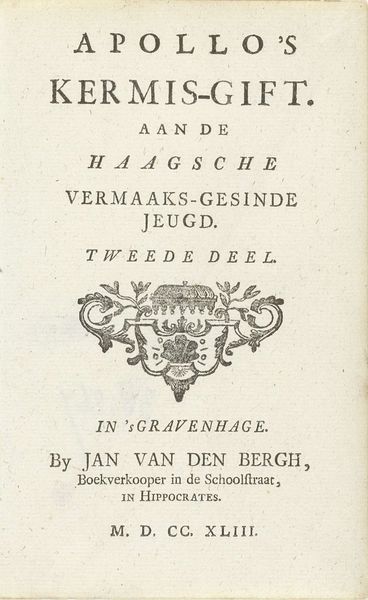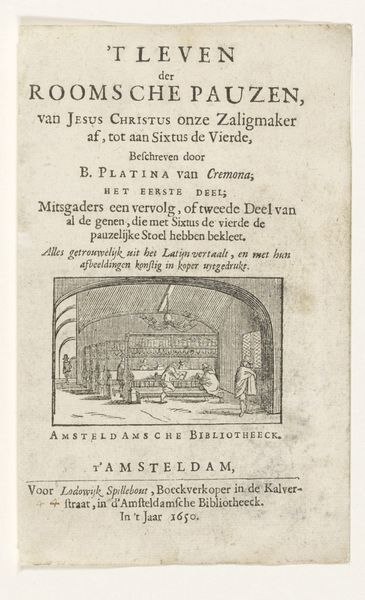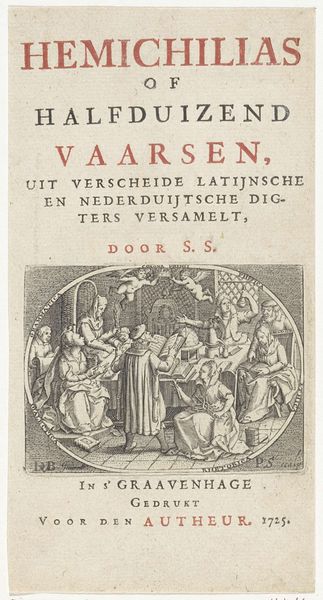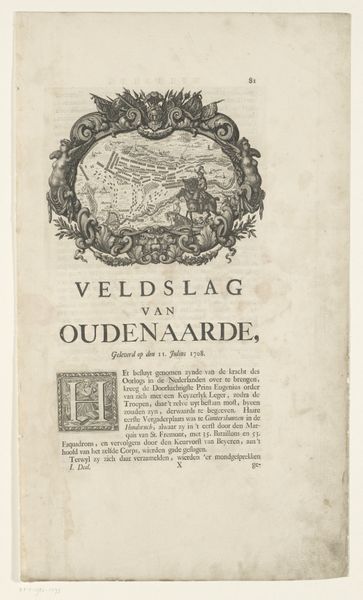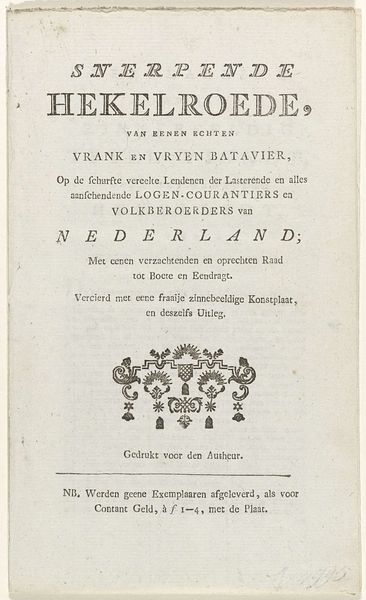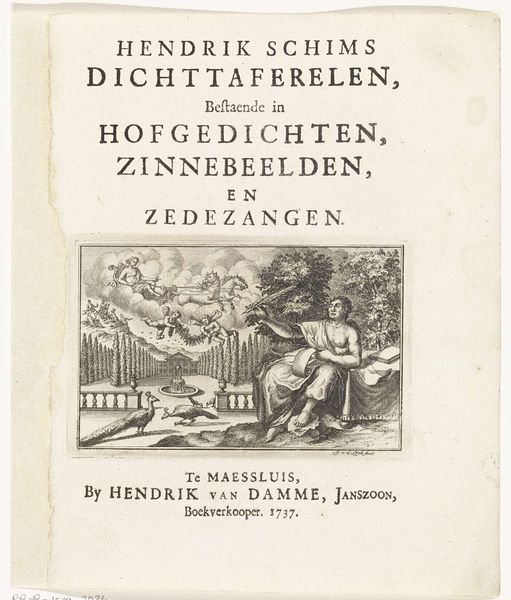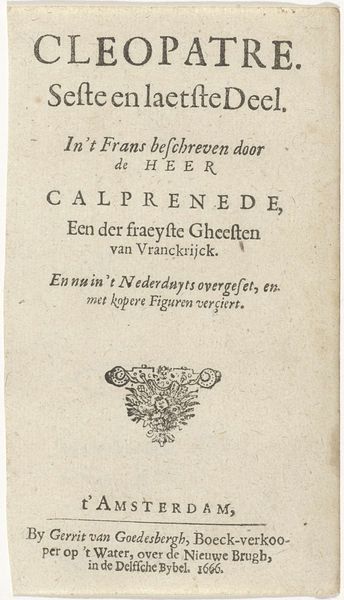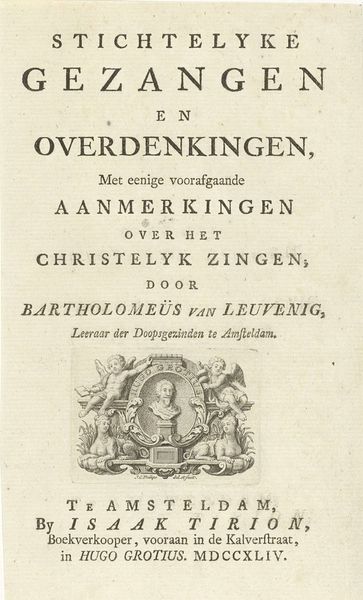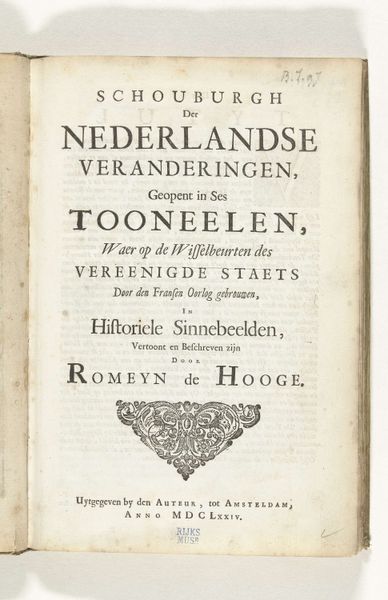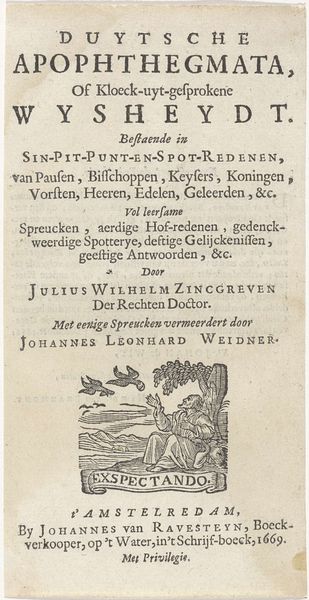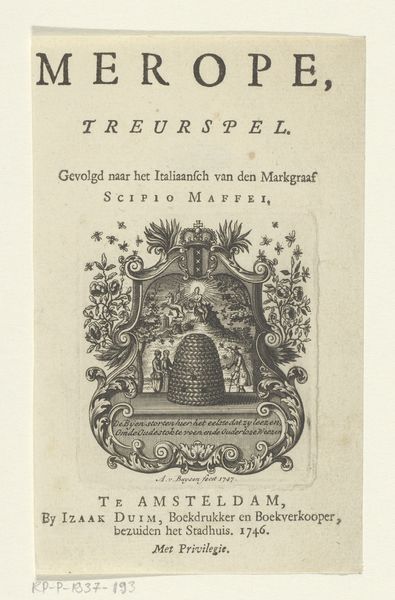
Dimensions: height 74 mm, width 64 mm
Copyright: Rijks Museum: Open Domain
This etching by Pieter Langendijk, titled "Figuren rond een bijenkorf", was made in the Dutch Republic, sometime around 1737. It appears on the title page of a book, printed in Amsterdam by Izaak Duim. The image centers on a beehive surrounded by figures, with a decorative architectural frame. In the 18th century, the Dutch Republic was a mercantile society, and industriousness was highly valued. The beehive was a common symbol representing an ideal society, industrious, harmonious and productive. The book was printed ‘met privilege’, indicating that the publisher had been granted a temporary monopoly by the local authorities. This was a common practice at the time, but it also meant that the authorities had some control over what was being published. To fully understand an image like this we can look at the economic and publishing history of the Netherlands. The meaning of this image is contingent on social and institutional context.
Comments
No comments
Be the first to comment and join the conversation on the ultimate creative platform.

